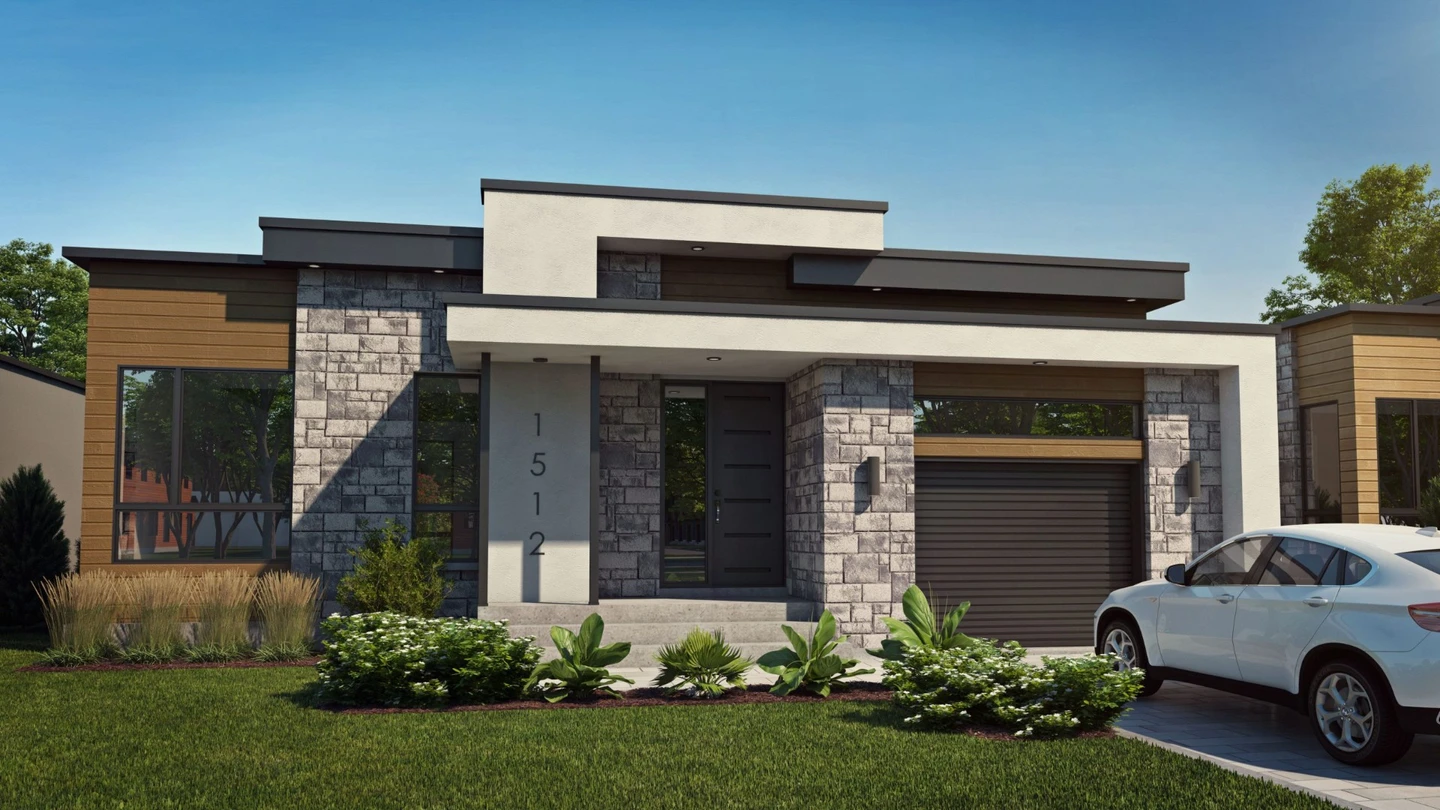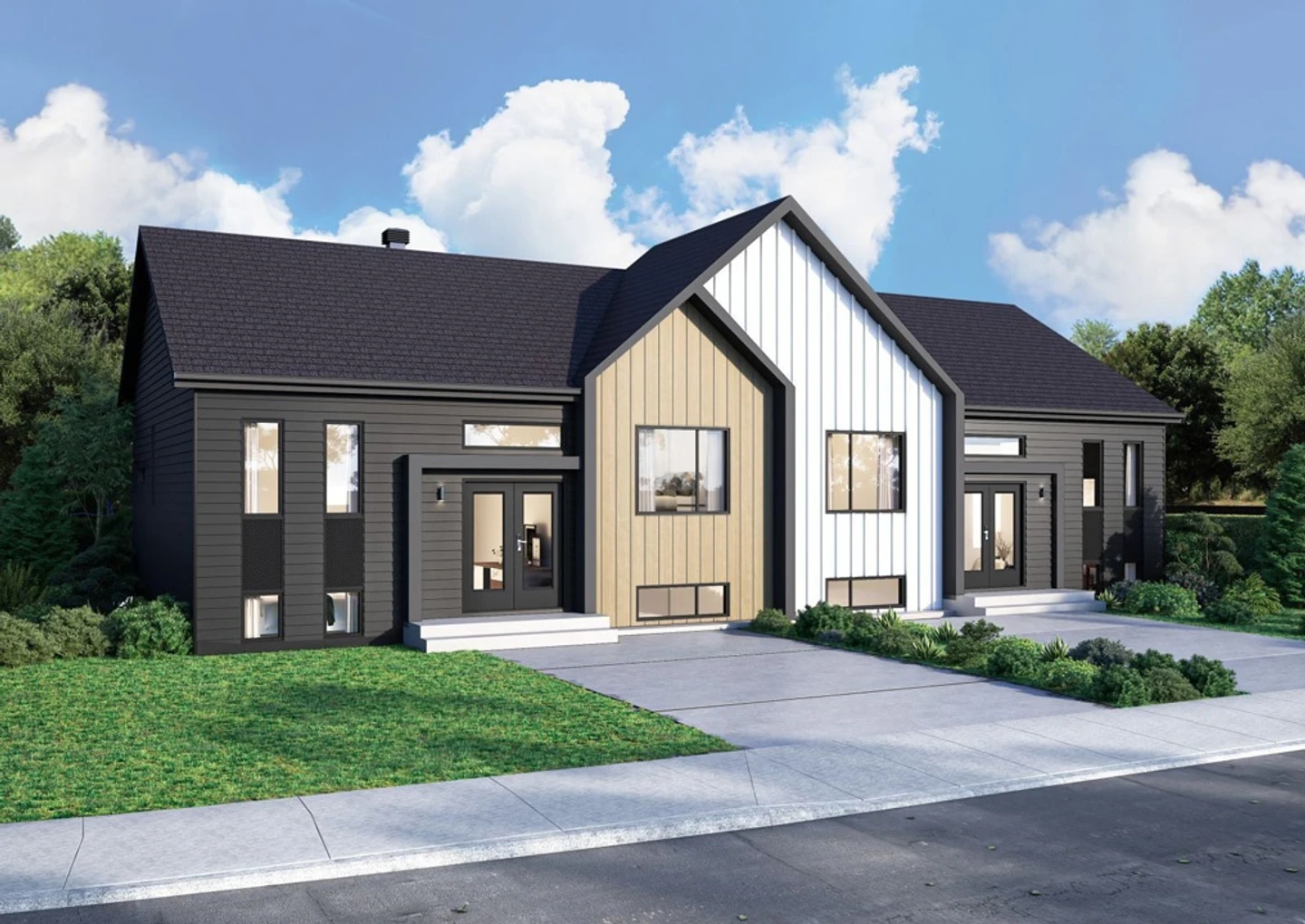How much does a new house cost in 2026?

Buying or building a new house is a major undertaking, but how much will it really cost in 2026? With fluctuations in the real estate market and variations in construction costs, it is essential to plan your project carefully. You need to take the time to look at the costs to expect and the factors influencing the price, including market trends.
Is the price really worth it?
Opting for a new house has many advantages:
- Modern and high-performance materials:
New constructions use innovative materials, providing better thermal and acoustic insulation, which reduces long-term energy costs. - Compliance with current standards:
New houses are generally built according to the latest standards in terms of safety, environmental protection, and energy efficiency. Of course, it’s very important to check the expertise and reputation of your contractor. - Personalization:
You have the option to design a house that perfectly meets your needs and tastes (even the most extravagant). Want a house shaped like a hexagon? A new house is the best option. - Low maintenance:
Since everything is brand new, you avoid major renovation expenses for several years. Once again, choosing the right builder is key.

What are the different costs for a new house?
The construction cost of a new house depends on several factors, such as the size, type of construction, chosen materials, location, and finishes.
Below is a general estimate of the costs you should plan for:
The land to build your home
- Cost: Usually represents 25% to 33% of the total budget.
- Example: A piece of land costing $150,000 within a total budget of $450,000.
Additional fees:
- Land surveying: $1,000 to $2,000.
- Soil and water quality tests: $800 to $2,500.
- Notary fees and transfer duties: Vary by region and the land’s value.
Construction costs
Construction costs are often calculated per square foot and vary depending on the chosen range:
|
Range |
Price per Square Foot |
|
Entry-level |
Around $180 |
|
Mid-range |
$210 to $270 |
|
High-end |
$330 and above |
Calculation: For a 2,000 sq. ft. house in the mid-range category:
2,000 sq. ft. x $250 = $500,000
Additional costs for a new house
- Basement and garage
- Single: from $40,000
- Double: from $60,000
- Finished basement: $35,000 to $60,000, depending on size and layout.
- Garage:
- Outdoor development
- Landscaping: About 10% of the property value.
- Driveways and entrances: $5,000 to $15,000
- Utilities connections
- Electricity, water, sewage: approx. $5,000
- Artesian well (if not serviced by the public water system): $15,000
- Septic tank (if not serviced by the municipal sewer system): $10,000
- Professional fees
- Architect: About 10% of the construction cost.
- Architectural technologist: $2,000 for standard plans.
- Structural engineer: If required.
- Permits and taxes
- Building permit: $250 to $1,500, depending on the municipality.
- Notary fees: $1,200 to $1,600.
- Welcome tax (transfer tax): Calculated based on the property value (about 0.5% to 1.5%).
- GST and QST: Applicable to materials and services, with the possibility of a partial refund.
Allow for contingencies
Plan to allocate around 10% of your total budget for unforeseen circumstances. Unexpected events can include weather-related delays, sudden increases in material costs, or last-minute changes.

Choosing the finishes for your new home
Exterior siding
- Standard vinyl (included in the entry-level range): Base cost
- High-quality vinyl or fiber cement: Adds about $5 to $8 per square foot
- Brick: Adds about $10 to $15 per square foot
- Natural stone: Adds about $20 to $30 per square foot
Flooring
- Laminate (included in the entry-level range): Base cost
- Hardwood: Adds about $5 to $10 per square foot
- Exotic wood or heated floors: Adds about $10 to $15 per square foot
- Marble or luxury materials: Adds about $15 to $25 per square foot
Kitchen countertops
- Laminate (included in the entry-level range): Base cost
- Quartz: Adds about $3,000 to $5,000 to the total cost
- Granite: Adds about $4,000 to $6,000 to the total cost
- High-end marble: Adds about $6,000 to $10,000 to the total cost
Research your contractor and request multiple quotes
When you’re planning to build or renovate your house, it’s vital to request at least three detailed quotes. This will allow you to compare prices and services, ensuring you get the best possible offer.
It’s also crucial to check the references of the contractors you’re considering. Make sure they are properly registered and have all the necessary insurance to carry out the work. This will protect you in case any problems arise during the construction phase.
Lastly, don’t hesitate to negotiate. Sometimes you can get better prices or even additional services by openly discussing your options with the contractor. Good negotiation can not only reduce your costs but also improve the quality of service you’ll receive.
Frequently Asked Questions
Is it profitable to build a house in 2026?
Yes. Even though the initial costs might be higher, building a new house in 2026 is profitable in the long run thanks to the savings on maintenance, repairs, and reduced energy costs. Moreover, a new house can have a higher resale value.
How can I finance my house construction project?
A self-build mortgage loan is an interesting option to finance your project. It allows for coverage of the different stages of construction with progressive disbursements, thus matching the pace of the work.
It’s also wise to find out about the available grants and government programs. These incentives can provide significant financial support, especially for eco-friendly constructions or first-time buyers. These programs vary by province and can change over time.
Don’t forget to inquire about municipal financial aid. Some municipalities offer specific programs to encourage residential construction in their area. This aid can take various forms, such as direct subsidies or temporary tax breaks.
What costs are often forgotten?
- Construction insurance: Protection in case of damage or accidents on the worksite, relevant if it’s a self-build.
- Internet and telecommunications connections: Installation fees can vary.
- Interior furnishings: Appliances, lighting, and window treatments are not always included in the construction cost.
Summary table of approximate total costs
The table below gives an overview of the estimated total cost for a 2,000 sq. ft. house, taking into account land (about 25% to 33% of the budget), construction costs, and basic finishes. Note that the figures are rounded and for guidance only; they can vary significantly based on location and finish choices.
|
Construction Range |
Entry-Level |
Mid-Range |
High-End |
|
Construction Cost |
± $180/sq. ft. |
$210 to $270/sq. ft. |
$330/sq. ft. and more |
|
Example (2,000 sq. ft.) |
± $360,000 (house only) |
$420,000 to $540,000 (house only) |
$660,000 and more (house only) |
|
Estimated Total Cost* |
~ $450,000 to $550,000 |
~ $550,000 to $700,000 |
~ $800,000 and more |
*The estimated total cost includes:
- The land (about 25% to 33% of the budget)
- Basic finishes and equipment
- Minimal professional fees
- A contingency reserve (about 10% for unforeseen events)
Tips for a successful home construction project
- Plan ahead: The more prepared you are, the fewer surprises you’ll face.
- Prioritize your needs: Identify the essential elements and those you can be flexible on.
- Communicate regularly with your contractor to monitor progress.
- Find out about local regulations: Some municipalities have specific construction requirements.
Building a new house in 2026 is an ambitious project that requires careful planning and solid budget management. By taking into account the detailed costs and making informed choices, you can realize the home of your dreams while staying within your budget.
Ready to make your project a reality? Explore our inventory of new properties!
About the author
Yannick
Cloutier
Yannick has over 20 years of experience in real estate development, management, and sales. Passionate about real estate, he enjoys sharing his knowledge and finding innovative solutions to meet the needs of an ever-evolving market. As the owner of several businesses in the sector, he understands the challenges and opportunities of property management and maximizing property value.
